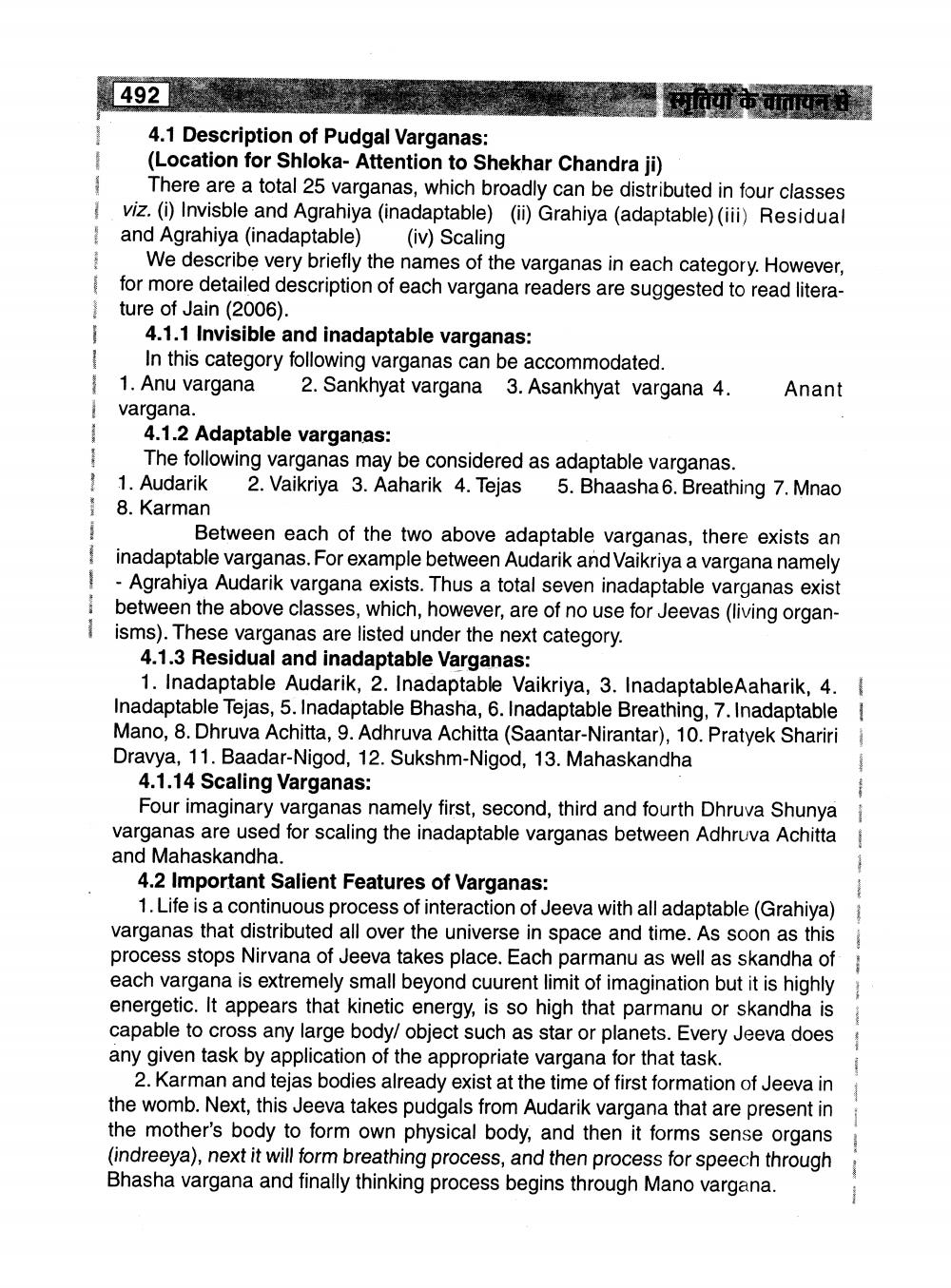________________
492
4.1 Description of Pudgal Varganas:
(Location for Shloka- Attention to Shekhar Chandra ji)
There are a total 25 varganas, which broadly can be distributed in four classes viz. (i) Invisble and Agrahiya (inadaptable) (ii) Grahiya (adaptable) (iii) Residual and Agrahiya (inadaptable) (iv) Scaling
We describe very briefly the names of the varganas in each category. However, for more detailed description of each vargana readers are suggested to read literature of Jain (2006).
4.1.1 Invisible and inadaptable varganas:
स्मृतियों के वातायन से
In this category following varganas can be accommodated.
1. Anu vargana
2. Sankhyat vargana 3. Asankhyat vargana 4. Anant
vargana.
4.1.2 Adaptable varganas:
The following varganas may be considered as adaptable varganas. 11. Audarik 2. Vaikriya 3. Aaharik 4. Tejas 18. Karman
5. Bhaasha 6. Breathing 7. Mnao
Between each of the two above adaptable varganas, there exists an inadaptable varganas. For example between Audarik and Vaikriya a vargana namely - Agrahiya Audarik vargana exists. Thus a total seven inadaptable varganas exist between the above classes, which, however, are of no use for Jeevas (living organisms). These varganas are listed under the next category.
4.1.3 Residual and inadaptable Varganas:
1. Inadaptable Audarik, 2. Inadaptable Vaikriya, 3. InadaptableAaharik, 4. | Inadaptable Tejas, 5. Inadaptable Bhasha, 6. Inadaptable Breathing, 7. Inadaptable | Mano, 8. Dhruva Achitta, 9. Adhruva Achitta (Saantar-Nirantar), 10. Pratyek Shariri Dravya, 11. Baadar-Nigod, 12. Sukshm-Nigod, 13. Mahaskandha
4.1.14 Scaling Varganas:
Four imaginary varganas namely first, second, third and fourth Dhruva Shunya varganas are used for scaling the inadaptable varganas between Adhruva Achitta. and Mahaskandha.
4.2 Important Salient Features of Varganas:
1. Life is a continuous process of interaction of Jeeva with all adaptable (Grahiya) varganas that distributed all over the universe in space and time. As soon as this process stops Nirvana of Jeeva takes place. Each parmanu as well as skandha of each vargana is extremely small beyond cuurent limit of imagination but it is highly energetic. It appears that kinetic energy, is so high that parmanu or skandha is. capable to cross any large body/ object such as star or planets. Every Jeeva does any given task by application of the appropriate vargana for that task.
2. Karman and tejas bodies already exist at the time of first formation of Jeeva in the womb. Next, this Jeeva takes pudgals from Audarik vargana that are present in the mother's body to form own physical body, and then it forms sense organs (indreeya), next it will form breathing process, and then process for speech through Bhasha vargana and finally thinking process begins through Mano vargana.




